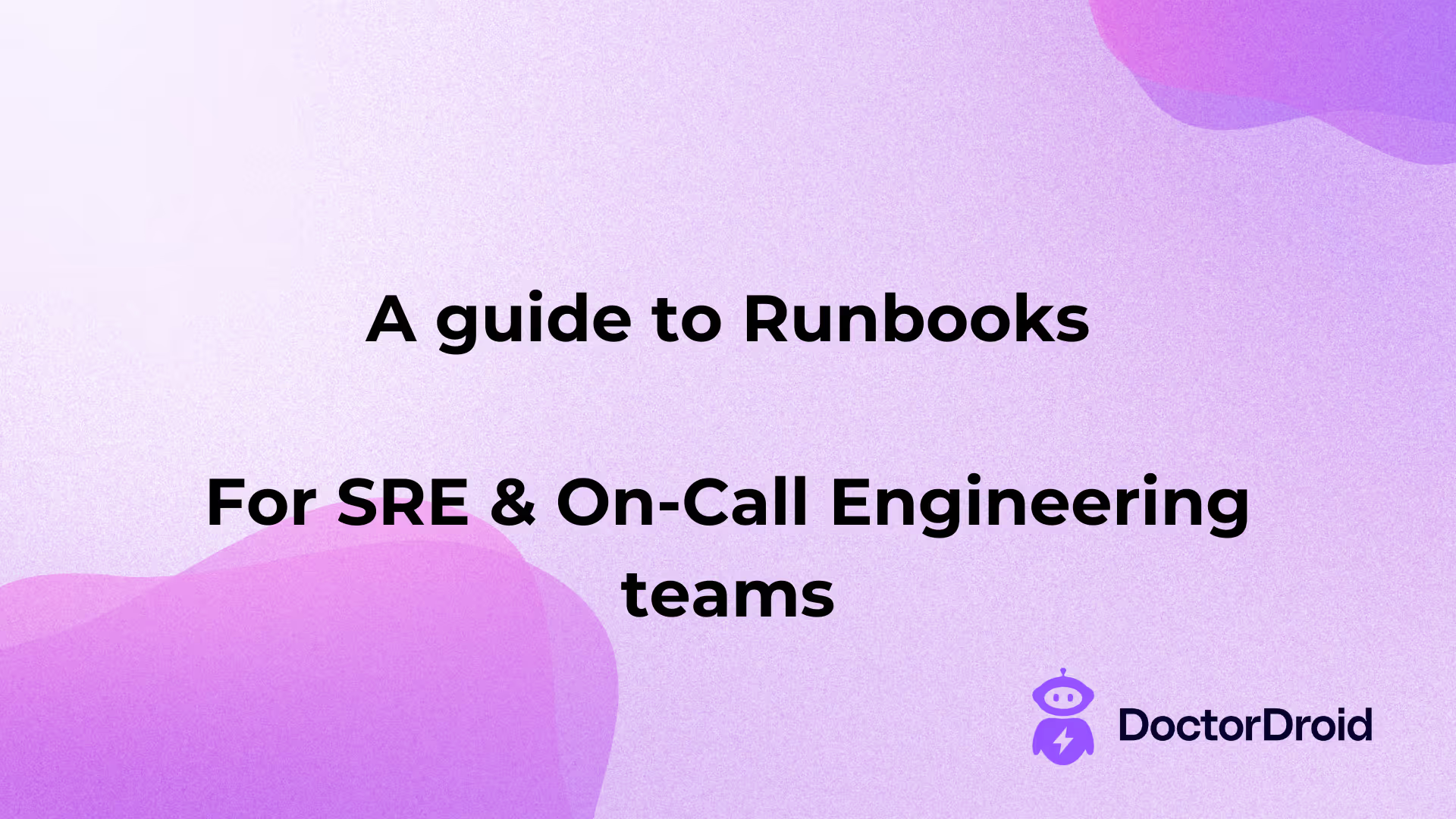
Runbooks are a set of instructions that are kind of complex and need to be followed to execute a known procedure. In context of software, runbooks are created by SRE & engineering teams as guides to help in doing predefined tasks during on-call operations. These tasks could vary from “How to check kubernetes cluster health?” to “How to rollback?” or "Finding success rate of an application"
A well written runbook helps a reader (typically an engineer) with the following information:
Runbooks can help drive autonomy and context sharing between team members. Here are some of the benefits you would see in your team post runbook implementation:
There are many tools in the market that are used for runbook creation and maintenance. But, there are only tools that use AI for runbook creation and automation. One such tool is Doctor Droid and we have open-sourced it -- Playbooks is not a documentation tool but an intelligent runbook management software where you can leverage AI & Automation to accelerate your speed of incident investigations.
Infact, runbooks can be imported from Confluence or any other popular tools. And, you can keep those tools as the single-source of truth for all the runbooks. But, Doctor Droid would access those runbooks for automation.
Popular tools are:
Doctor Droid helps you to automate Runbooks and accelerate production incident debugging. Read more on our website.
Put runbook creation as:


